Halawa Valley Molokai Hike and Cultural Experience
This article may contain affiliate links where I make a small commission for purchases you make from links that you click from this article. By purchasing through these links, you support me at no additional cost to you. Thanks for your support.
I press my forehead against his forehead, and I feel his hands reach around and grab the sides of my arm as if to steady himself and me. We are nose to nose. I close my eyes with this stranger, and we take a deep breath at the same time, essentially sharing our intake of oxygen – of life.
This exchange of breath is referred to as honi, and it’s a Polynesian greeting in which two people press their foreheads together and inhale at the same time. The greeting is considered an honor as it represents the exchange of ‘ha’–the breath of life and spiritual power between two people.
Table of Contents
The Significance of Ha in Hawaii
‘Ha’ is everywhere in Hawaii: aloHA, maHAlo, HAwaii. It is an important part of the culture, and it’s why the tradition of honi is important to carry on. I experienced the honi while hiking through Halawa Valley in Molokai.
Molokai, the least known but most culturally significant Hawaiian island, is dedicated to keeping the Hawaiian culture and traditions alive, and it begins with a trip to HAlawa Valley (meaning sufficient breath).
I think more than I should about what I will pass on from my life when I’m gone. As a single woman with no children, it’s a perplexing question for me. It’s human instinct to want to create a legacy or memory; I think we all want to pass something along. It’s one thing to want to pass on your own legacy, but what if your culture and base traditions were in jeopardy of going extinct? What would you do?
Discover why Molokai isn’t for everyone
Keeping Halawa Valley Culture Alive
After a stunning drive along the Molokai East Coast, we arrive in Halawa Valley – an area half a mile wide and four miles deep. This valley is graced with beautiful vistas and towering waterfalls and is one of the island’s most historic areas.
There we met 75-year-old Anakala Pilipo (Uncle Pilip), who is the last living Hawaiian descendant to be born and raised in Halawa and still resides there. He was chosen at the age of five to be the cultural practitioner for his family. This honor meant he was given the responsibility of carrying on their traditions and cultural practices. He took his responsibility seriously as he devoted his life to this valley and the Hawaiian cultural traditions.
Greg, one of Anakala Pilipo’s six children, addresses us when we arrive and starts our journey. He is the only son currently residing in Halawa Valley, and like his father, he too has been chosen to perpetuate the Hawaiian culture. He has now started the process of taking over this responsibility and passing on the traditions and stories. And it didn’t stop there.
Anakala Pilipo’s grandchildren were also there wearing traditional dress and partaking (and sometimes goofing off) in the talk and demonstrations. They were on school holiday, and part of their ‘duty to the family’ was to be a part of these talks and experiences to carry the stories forward. It was really fascinating to see which ones seemed bored with it and which ones embraced it.
Check out these abandoned Molokai hotels
Greg began by telling us about cultural traditions like the honi and the blowing of the Pu (conch shell) to announce you’re on your way and eminent arrival, an ancient sort of text message. He even explained how to properly pronounce Molokai.
Anakala Pilipo proceeded to tell us about the valley, which was home to over 5,000 people, 1200 taro patches, and 24 temples. His voice started to crack in emotion as he went on to tell us about the historic tidal wave that traveled 1.7 miles into the valley and destroyed the area in 1946.
Experience a Unique Culture and Tradition
Educated with the proper background, the guests were next given traditional sarongs to wear and were invited to hike into the valley as Pilipo’s guests. Tourists and locals intermixing, old and young – this is what travel is all about.
We started our procession, all carrying our ho’okupu: gifts wrapped in ti leaves, and occasionally our group would blow the pu to announce our presence. We’d all get really quiet and intently listen for the answering pu. It was sort of an ancient form of can-and-string telephone. Once we arrived at the entrance to the valley, we were greeted by the honi and invited to pass.
Halawa Valley Hike to Mo’oula Falls
Once the ceremony was completed, the rest of the afternoon we hiked deep into the valley along across rivers to Mo’oula Falls. Along the way, we talked with Greg and others from his family to learn further about native and invasive species, ancient taro terraces, historical rock walls, and worship sites. The hike wasn’t difficult, but it was steamy. I was happy I had layers to peel off!
The sites were fascinating and the giant trees enthralled me; I kind of wanted to hug them! And since it’s Hawaii, of course, at the end of the trail, we were welcomed by the 250-foot high roaring Mo’oula Falls.
Some of us swam in the refreshing water, kids found high places to leap off of, and some just sat and took it all in. I sat and thought about legacy; I breathed and meditated on it all. Even though I had no answers for my own legacy, I thoroughly enjoyed being a part of another family’s quest to pass on their culture and legacy. After all, we all want our life – our breath – to be remembered.
Hotel Molokai – the one and only
More Info:
Halawa Valley Cultural Hike – www.halawavalleymolokai.com
Disclosure: I was a guest of the Molokai Visitor Bureau. However, all opinions are my own.

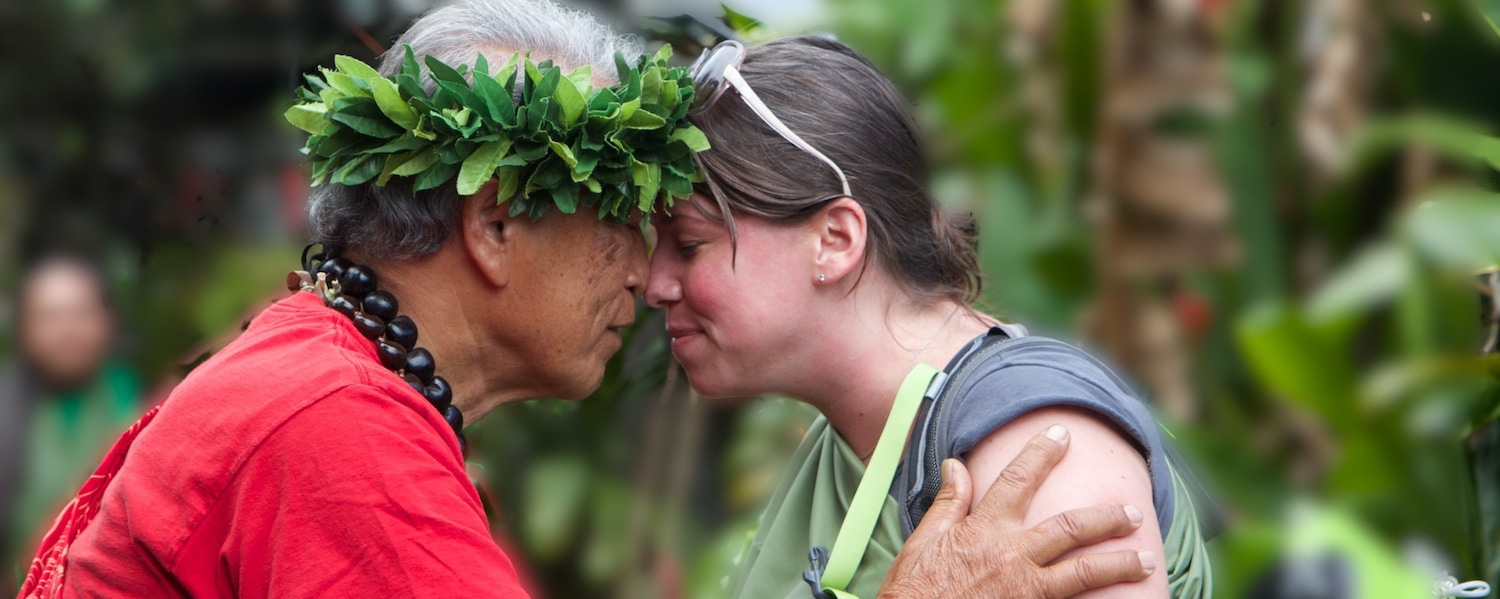
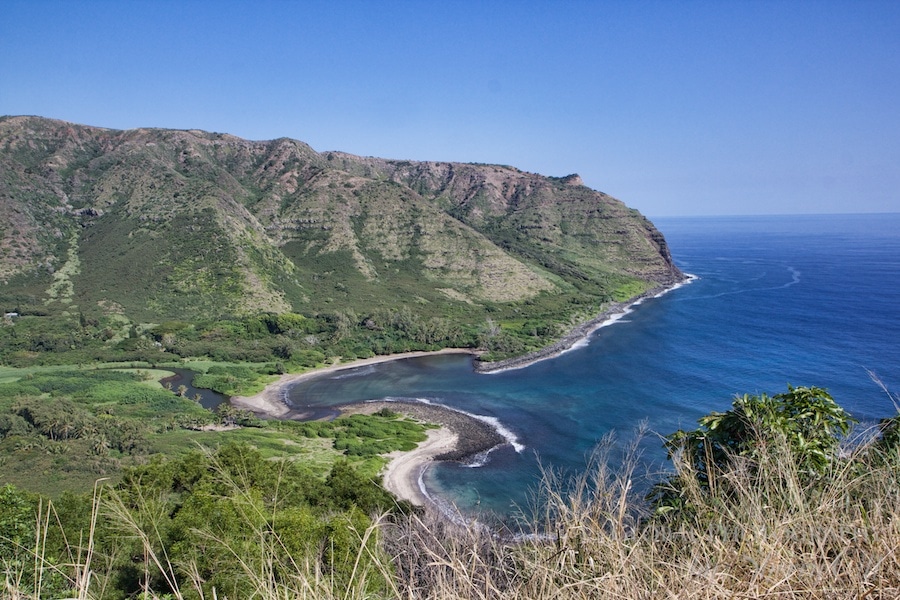
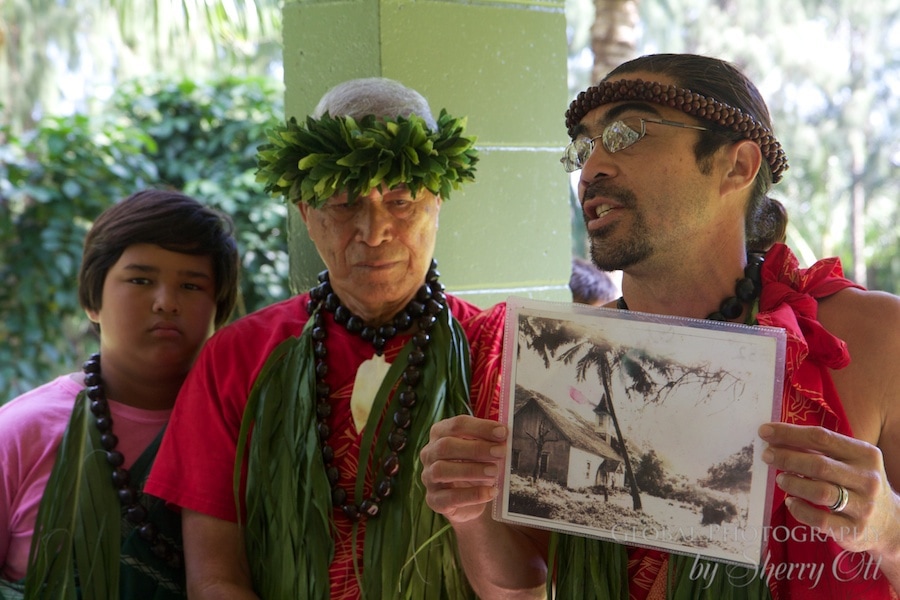
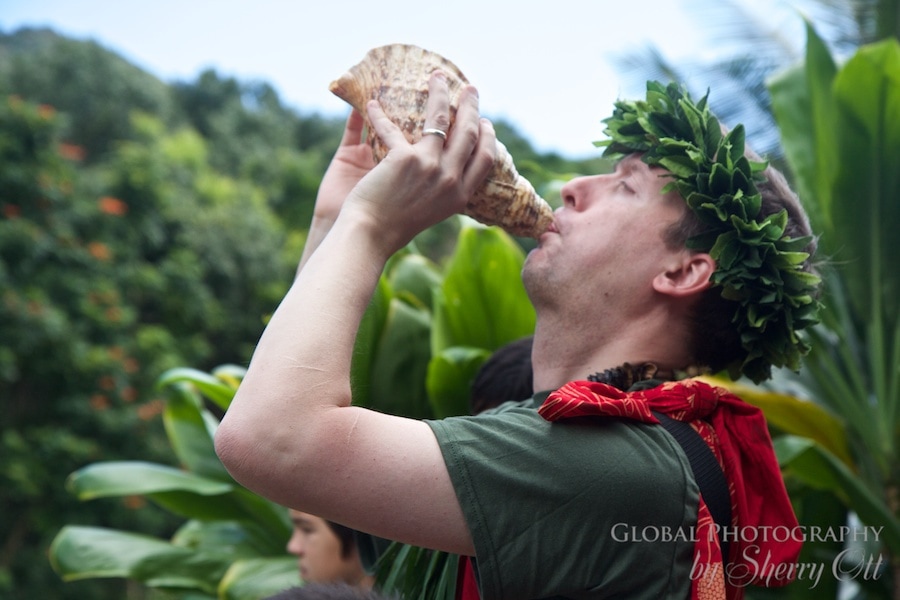
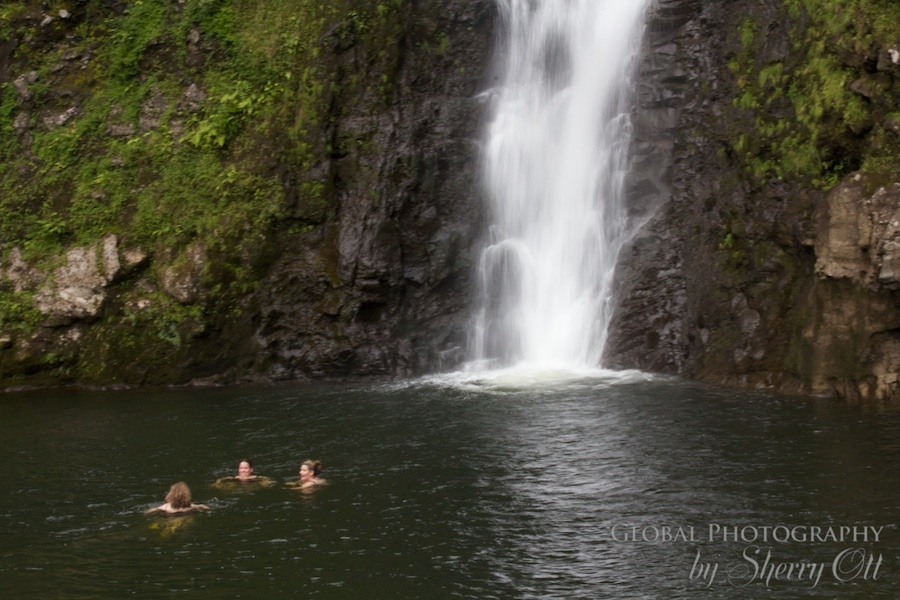
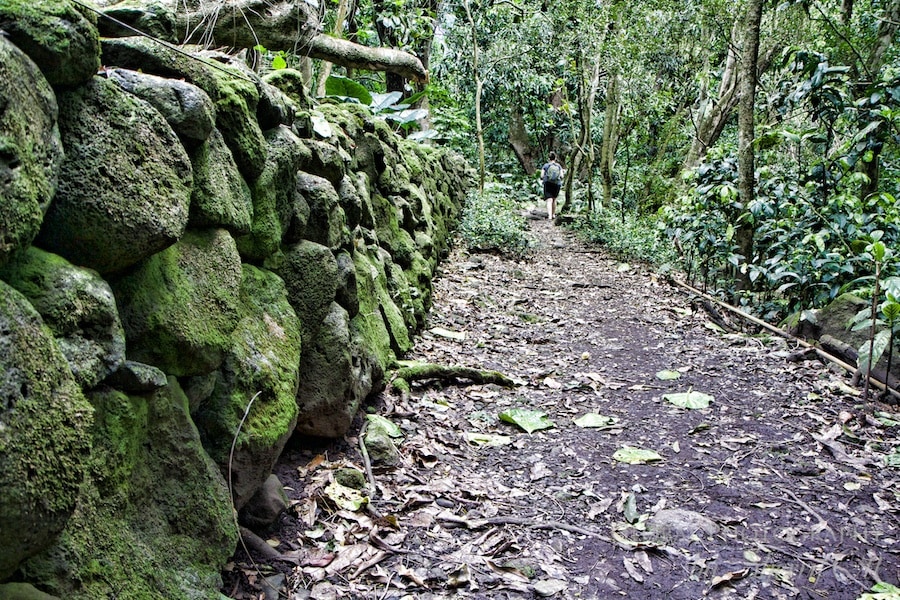
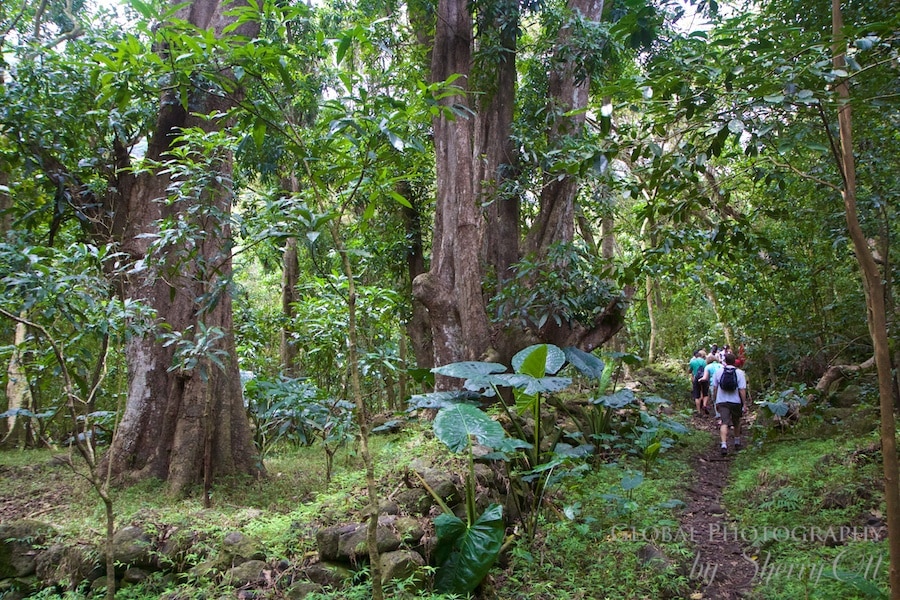
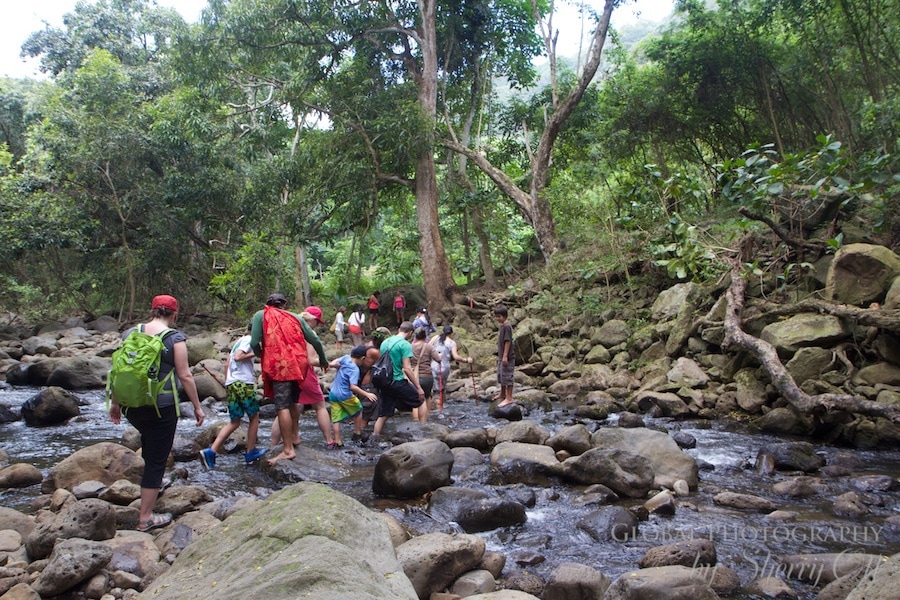
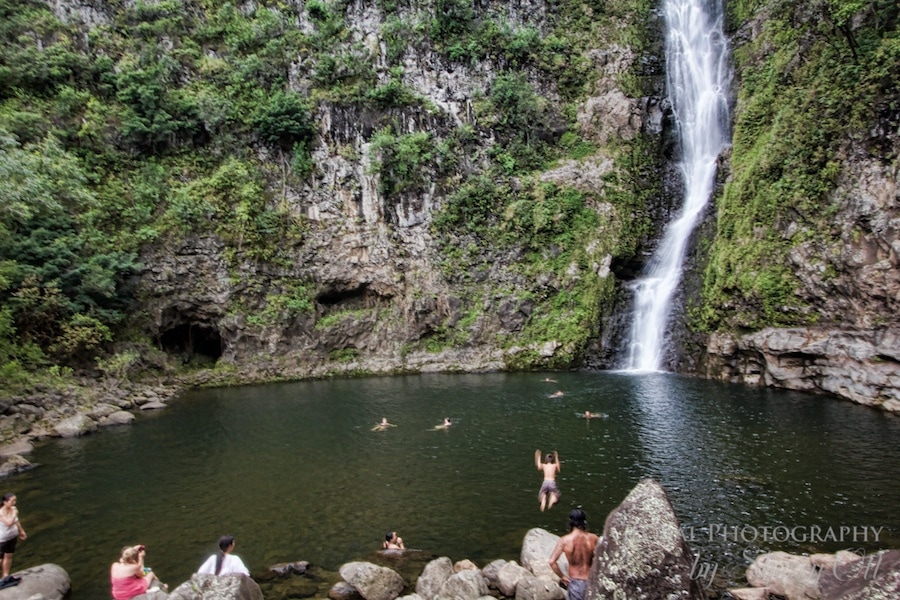
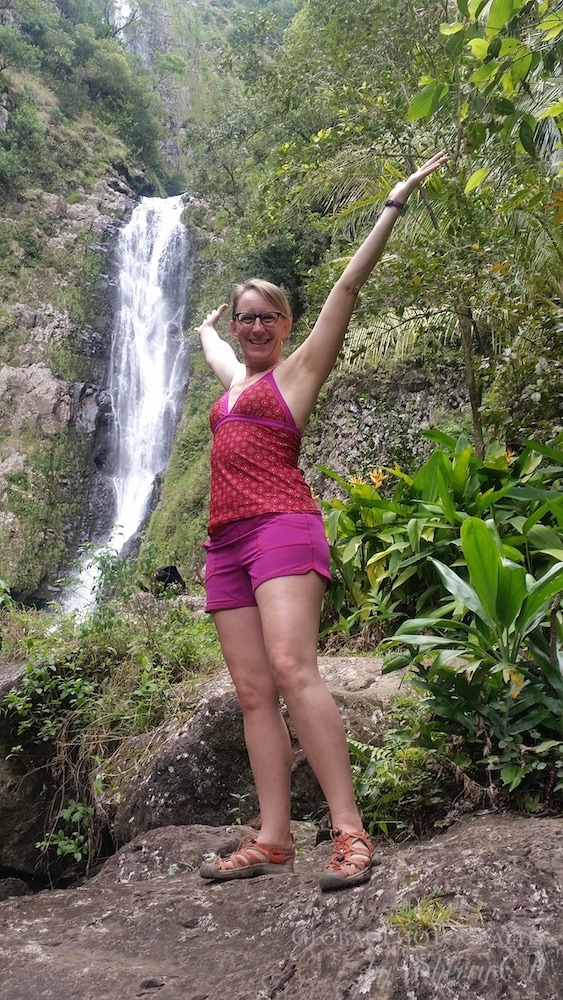



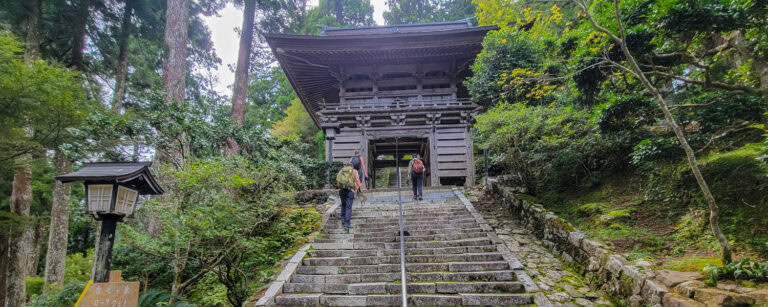
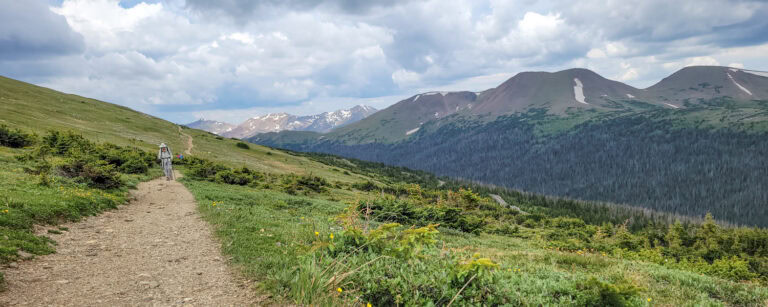

This was a completely fascinating article! I hope it helps people learn that Hawai’i is more than leis & Lias. This caught my eye because I’ve been obsessed with the native Hawaiian people, culture & land since the early 1980s when Magnum PI was on TV. However, as I was reading this, I kept thinking, “Don’t I know someone from RHS named Sherry Ott?” Then I did a little digging online & realized you are THAT Sherry Ott!
*LUAUS
Hey Chris – are you from Peoria and went to RHS? Very cool! Are you in Hawaii now?
What a marvelous zen experience! I love the first the pic.
That watering hole looks so refreshing. What a beautiful hike!